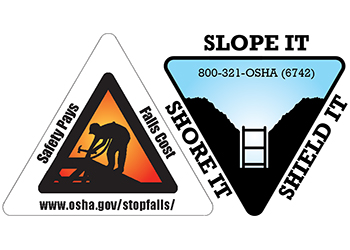QuickTakes Newsletter
June 15, 2021 • Volume 20, Issue 14 • A twice-monthly newsletter with information about workplace safety and health.

COVID-19 Workplace Update
OSHA issued an Emergency Temporary Standard to protect healthcare workers, and updated guidance for all industries.
Advisory Committee Meeting
OSHA will hold a meeting of the National Advisory Committee on Occupational Safety and Health on June 22.
Safety Summit
OSHA will take part in an online safety conference on June 23.

Construction Initiative
OSHA’s Colorado offices will conduct random, weekend safety inspections to improve worker safety.
Safety Settlement
A behavioral healthcare center agreed to revamp its workplace violence prevention program after an OSHA investigation.


Inspection Violations
Three contractors face penalties for failing to conduct inspections and identify hazards following a worker fatality.
Grain Handling Violations
A grain facility was cited for workplace safety failures following an engulfment death in a corn silo.

Read about more OSHA enforcement cases.
OSHA Safety Partnership
OSHA is collaborating with Obrascón Huarte Lain North America to promote worker safety and health during a transportation construction project.
Safety Resource
A new bulletin provides instruction on how to safely construct and secure job-made boxes for lifting workers and materials.
Social Media
Follow @OSHA_DOL on Twitter. For more safety and health resources and information, visit the U.S. Department of Labor’s social media accounts:
COVID-19 Q&A
How can the employer ensure employees comprehend the training elements required by the COVID-19 ETS?
Employers must provide training in a language and at a literacy level the worker understands. If workers speak different languages or are at different literacy levels, the employer must ensure all training materials are presented so that each employee can understand. This may require the creation of various training materials in different languages.
The implementation of training programs, including how training is conducted and by whom, may vary based on the size and type of workplace or business, and employers have some flexibility to adapt training to their specific workplace. Employers can offer training in a variety of formats, including online, virtual, instructor-led, or application-based methods, but employers must ensure that workers get answers to their questions. There are different ways employers can ensure comprehension of the training materials, including a knowledge check (e.g., written or oral assessment) or discussion after the training.











